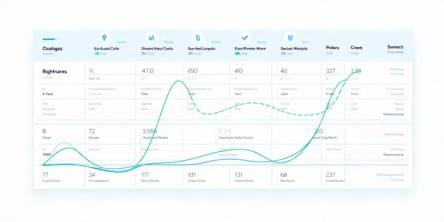Flutter Apps: Development Cost and Other Things You Should Know

Flutter today is becoming popular with numerous companies eager to adopt this technology. The Flutter apps are observing monumental growth ever since it first arrived on the scene. This clamoring for this tool is not without reason though, i.e. it offers plenty of benefits that make it such a great development tool.
Through this article, I’m going to address the queries of app development cost among others. And, do read more about why Flutter is a worthy competitor to other hybrid frameworks, and look at the latest statistics about this technology.
Some of these advantages have been listed below.
- Codesharing: Among the biggest USPs of Flutter is that it allows code sharing, which means a considerable reduction in time spent writing code for different platforms during hybrid development projects.
- High-quality user experience: Flutter includes the Skia 2D library, which is conducive to the use of high-quality graphics in the app. Then there’s the fact that Flutter organizes all elements like widgets, allowing developers to completely adapt the visual aspect of the app.
- Free & Open Source: Flutter technology, because of its free and open-source nature, allows developers to access the documentation easily and helps them to solve the issues with the help of expert developers. In addition to this, the developers also get free access to tons of third-party packages.
Now, if you are considering developing a Flutter app, it is also important to understand how much such a project can cost. Allow us to break down the cost associated with such a development project.
- Discovery phase: A critical point in the project, at this stage one, defines the goals, challenges, etc., and wireframes are prepared. So, you will have at least UI/UX designers, business analysts, and project managers working on the app at this point. This tallies up to five weeks of work and $10,000 in cost.
- UI/UX design: At this stage, designers go from wireframes to mockups, which offer a glimpse of the finished design. Once approved, the team may choose to first develop a prototype to see how one can interact with it. On average, designers spend about 40 hours on this stage, which translates into a cost of roughly $6,000 for this stage.
- Development and testing: This stage generally involves at least a project manager, a handful of developers, and a QA engineer. Considering each participant’s average charges/salaries and the time they are expected to spend on the development project at this stage, you can expect to pay roughly $110,000 for the team’s services.
It is not enough to simply know the cost; it is equally important to also consider the different factors that can affect the development cost.
- App features: Some businesses need a single-page app, while others need complicated hybrid offerings with avant-garde features and functionalities. The more the number of features and how advanced these features are, the Flutter app development cost for a company can rise rather quickly.
- Server cost: A modern app tends to generate an abundance of data that is rather precious to the company offering said app. But where will all that data go? In servers, of course, which brings us to the next factor that adds to the development cost of a Flutter app.
- Support and maintenance: To ensure the app can keep up with demands, remain trendy, address any issues, etc., it is important to ensure that the app is regularly updated. Such periodic maintenance can add to the development costs.
The goal of such a breakdown of the development cost is to demonstrate the high value a Flutter app brings to the table as compared to its cost. Plus, it also makes decision-making easier for companies. Now that you understand the costs, the next ought to be starting the search for an expert vendor for Flutter app development services.
Similar Articles
Modern businesses are drowning in communication overload, and much of that burden stems from outdated tools that simply can’t keep up
Building lending software isn’t just a technical project—it’s a business decision. Whether you're a fintech founder or part of a traditional lending institution trying to go digital, three questions will shape everything that follows
Learn why robust security is crucial for super app development. Explore key strategies and best practices for mobile app development security.
Walkie-talkies with an extensive reception capacity have changed significantly when it comes to portable communication by displaying cutting-edge features with seamless connectivity that covers more than just the state
USB-C technology has revolutionized the way we charge our devices, offering faster charging speeds, higher power delivery, and universal compatibility across multiple devices
Discover expert mobile app development strategies to create a viral app that attracts users and boosts engagement
Optimize app localization for iOS users across the EU with language, cultural, and regulatory adaptations. Engage users and boost retention with these tips!
Discover the top 10 mobile app development trends of 2024! Explore 5G, AI, AR/VR, blockchain, and more to stay ahead in the ever-evolving app development landscape.
With its triple-lens design and fantastic photo and video quality, the iPhone 11 Pro Max is extensively acknowledged for its superior camera system. But problems can occur with also one of the most advanced technologies. If you're having issues with the iPhone 11 pro max camera lens, knowing the typical problems and how to repair them









